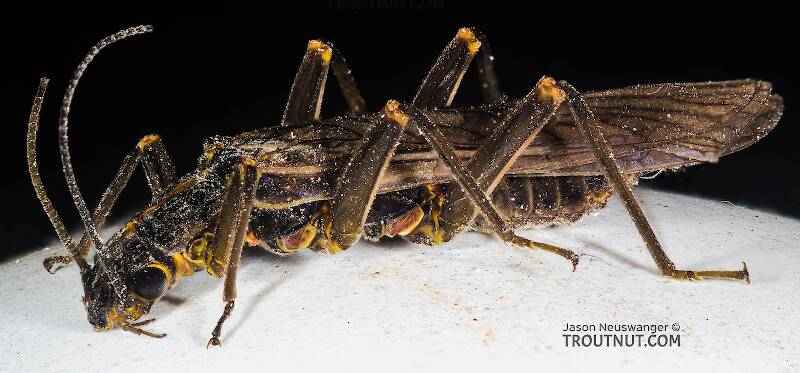
Blue-winged Olives
Baetis
Tiny Baetis mayflies are perhaps the most commonly encountered and imitated by anglers on all American trout streams due to their great abundance, widespread distribution, and trout-friendly emergence habits.

Male Epeorus longimanus (Slate Brown Dun) Mayfly Dun Pictures
Identification of this one was as follows. Body 9 mm, wing 11 mm.
Both Epeorus albertae and Epeorus dulciana should have a conspicuously darkened humeral crossvein in the forewing. This one doesn't.
The foretarsal claws are dissimilar (one sharp, one blunt), which also rules out the Epeorus albertae group.
The dark macula on the forefemora rules out Epeorus deceptivus, which is also supposed to be a little bit smaller.
Both Epeorus grandis and Epeorus permagnus should be much, much larger.
Of the species known to be present in Washington, this leaves only Epeorus longimanus, which is exactly the right size. The key to male spinners in Traver (1935) describes distinctive markings that are visible (although more faintly) in this dun: “Black posterior margins of tergites do not extend laterally to pleural fold, but an oblique black line form this margin cuts across poster-lateral triangle to pleural fold.”
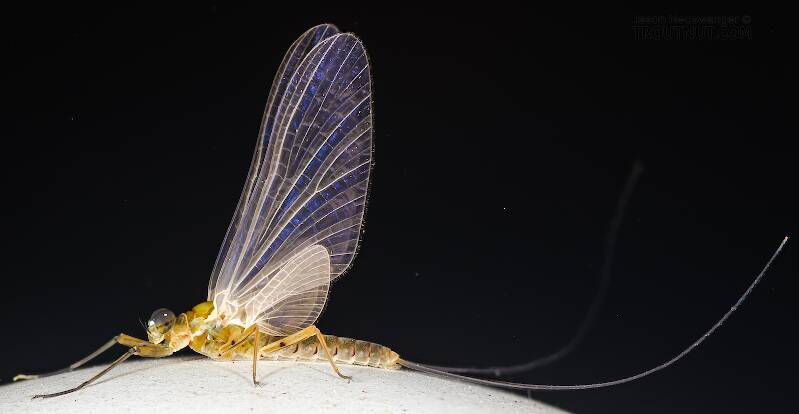
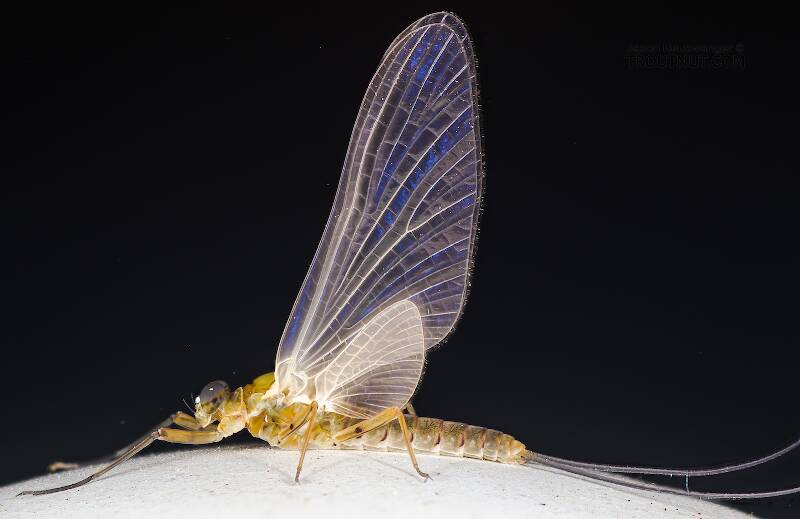
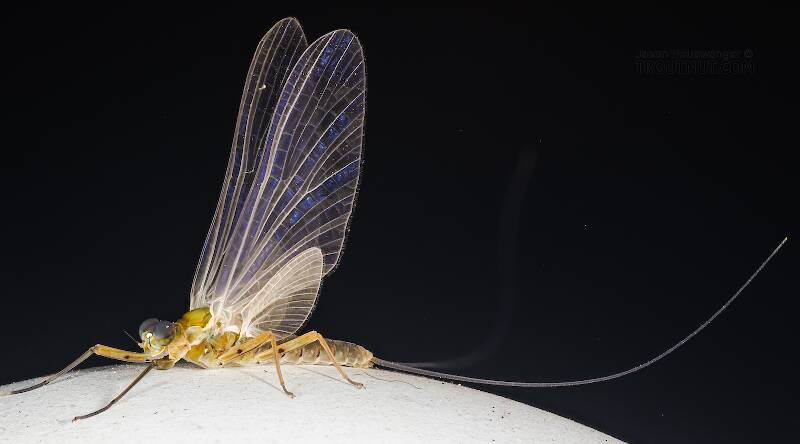
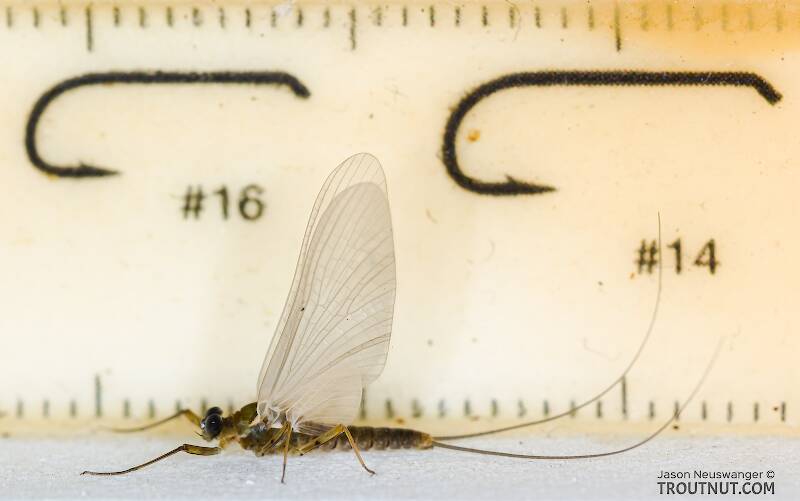
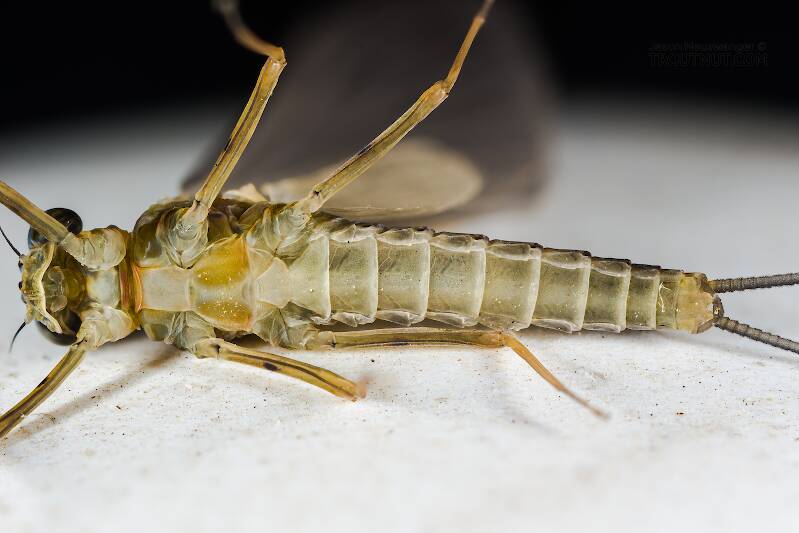
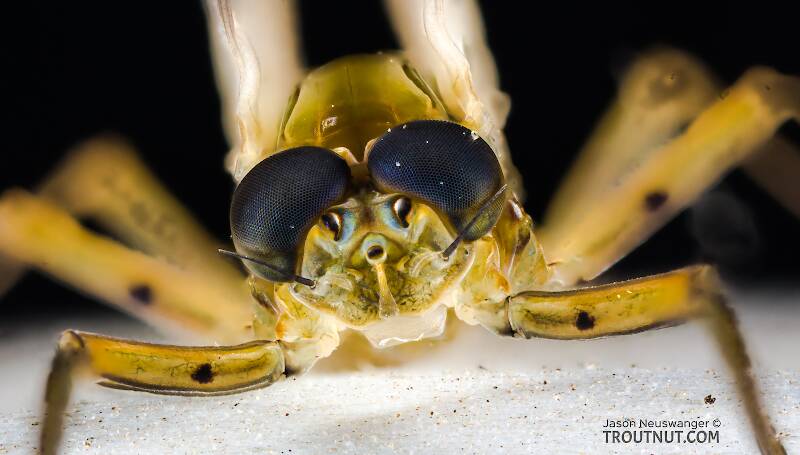
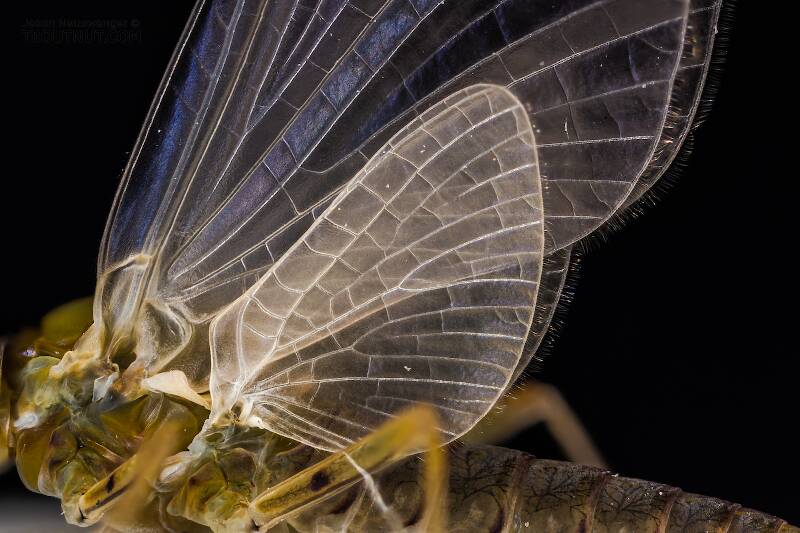
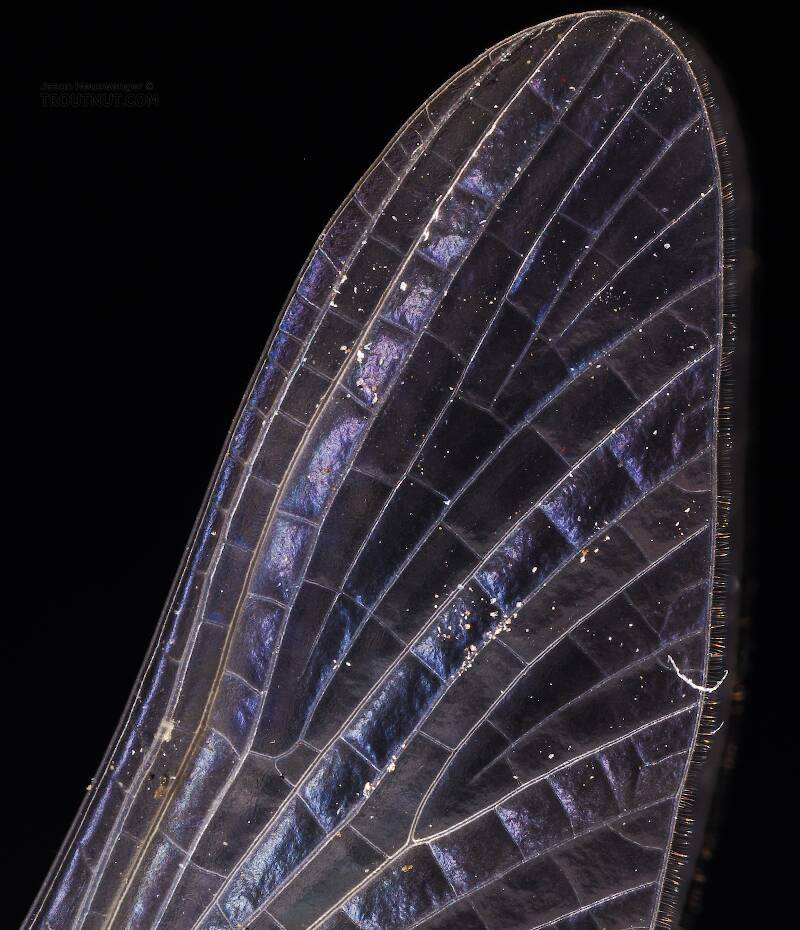
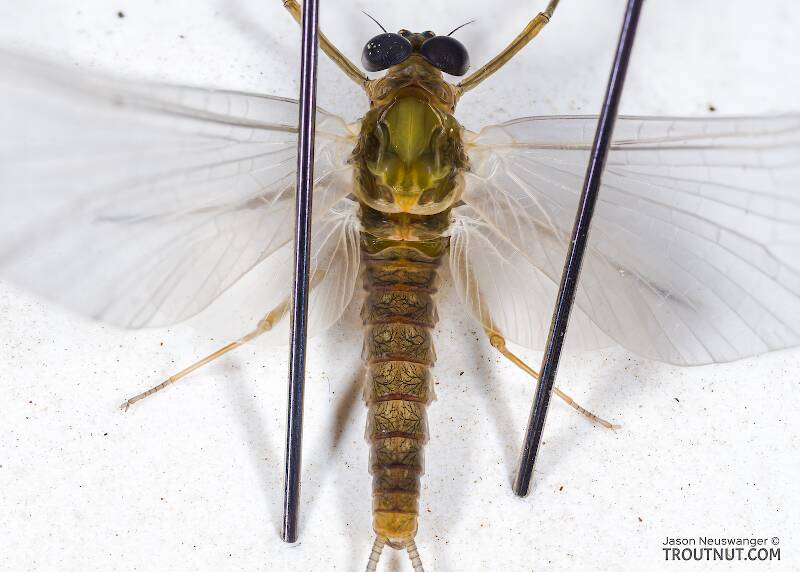
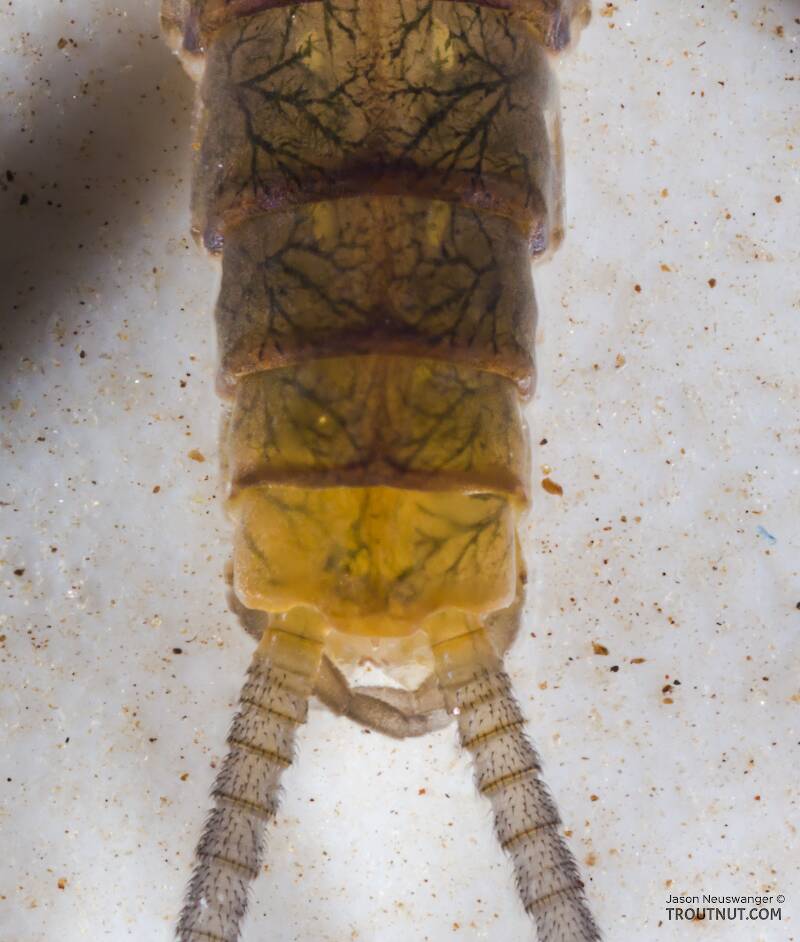
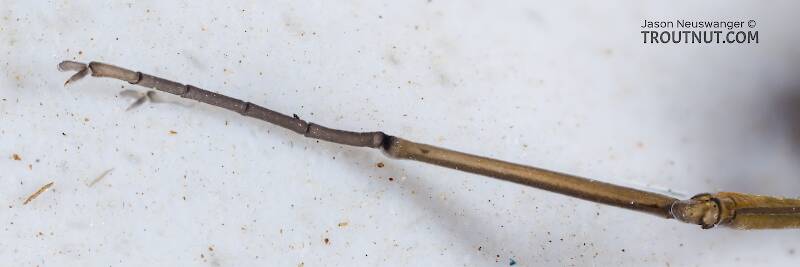
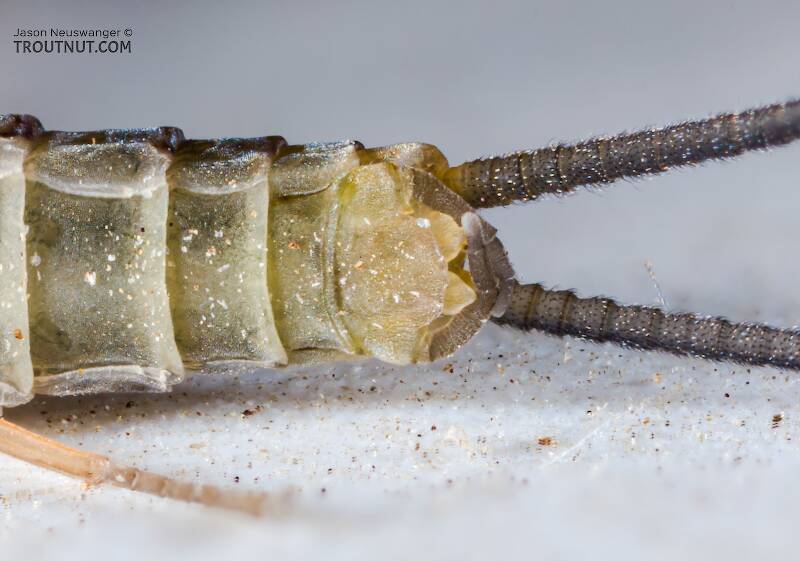
This mayfly was collected from Mystery Creek #295 in Washington on May 31st, 2022 and added to Troutnut.com by Troutnut on June 1st, 2022.
Start a Discussion of Dun
Male Epeorus longimanus (Slate Brown Dun) Mayfly Dun Pictures
Collection details
Date: May 31st, 2022
Added to site: June 1st, 2022
Author: Troutnut


